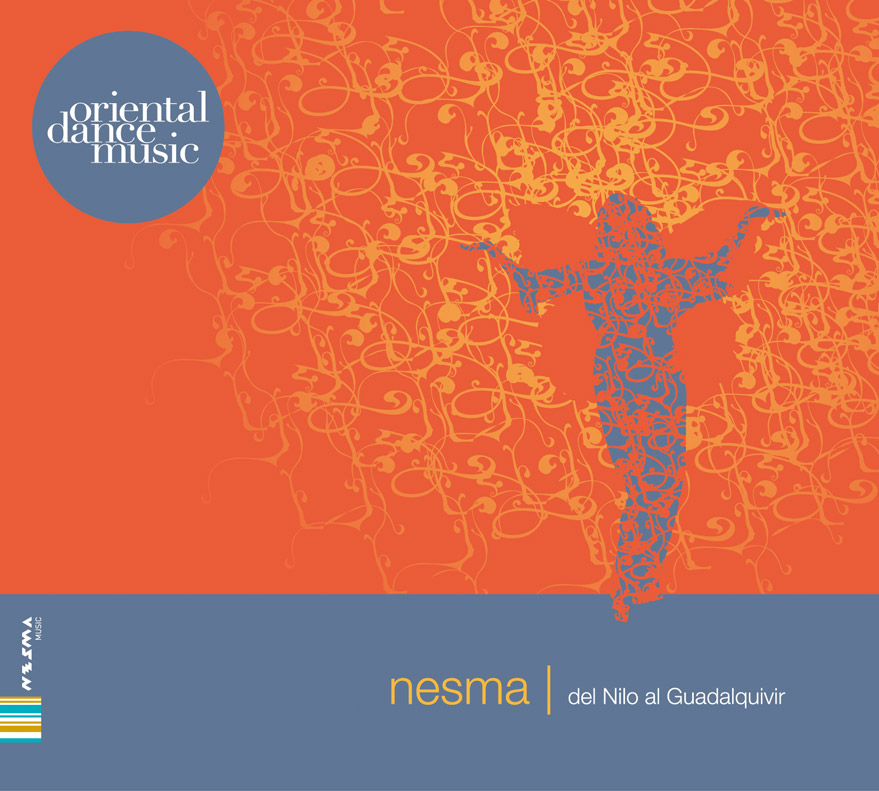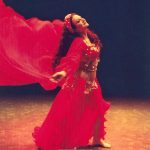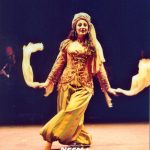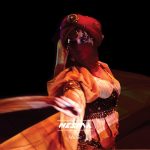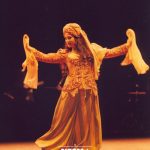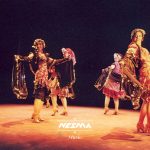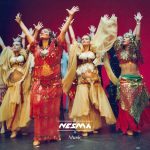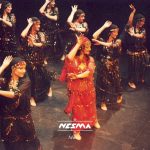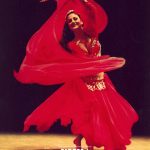Del Nilo al Guadalquivir
Nesma
“Poetry means everything to the Arab peoples.” The exalted poets from throughout history, Arab and Andalusi alike, thread through the handiwork of dance, setting the tone, giving meaning to and mapping the path From the Nile to the Guadalquivir.
This disc of the music from the dance show From the Nile to the Guadalquivir compiles a wide range of Arabic music styles performed on traditional instruments. You will enjoy listening whether you dance or not.
- Artist: Nesma
- Title: Del Nilo al Guadalquivir
- Oriental Dance Music Volumen 2
- Catalogue ref.: ND0101
The golden dreamscape which decorates the visions of Al-Andalus from more than a millennium ago has never disappeared from the imagination and the myth of the Spaniards.
“Poetry means everything to the Arab peoples,” said the famous Arab scholar E. García Gómez. The exalted poets from throughout history, Arab and Andalusi alike, thread through the handiwork of dance, setting the tone, giving meaning to and mapping the path “From the Nile to the Guadalquivir”.
With the idea of sharing the dance and folklore of Arab countries as well as the Hispanic-Arabian dance and music that is at the root of Spanish folklore, the Al-Andalus Danza company made up of Spanish dancers was created, following the lines of the painstaking research and study done by the sage masters who lived in the glorious age of Cairo around the middle of the twentieth century.
We have here dance, music and poetry together to tell a story. A story that we take up again from the depths of Pharaonic antiquity and that, by way of the splendours of Baghdad, the annals of Harun al Rachid and the Thousand and One Nights, pervaded the coastal area of the Mediterranean with classical grace and Oriental refinement following the Muslim extension. A story that links the Cordoba Omeyas with the Persian and Byzantine civilizations and that, after mixing with the subtle air of Sierra Morena was to be recreated with the invention of the zejel which in addition to becoming popular in Arab countries gave rise to the Andalusi music and to the dances now gathered here and performed on the banks of the river Nile. And from Egypt, the dance and musical centre of that half-Oriental and multi-ethnic Koine, we also present an assortment of ancient dances and contemporary adaptations of historic dances that show great modernizing evolutionary force.
We must not forget one other source of inspiration: the medieval fusion of Arabian poetry (casida) with Spanish song (moaxaja) which paved the way for Andalusi zejel and which today still flows with love among Magreb countries and in the Near East, where it inspired new choreographies that now come back to us in this performance of “From the Nile to the Guadalquivir”.
I write from Magerit (Madrid), the city founded in the ninth century by Mohammed I the Emir of the Cordoban Omeyas, a time when Oriental music was not a fad or a fusion but rather the music of the Spaniards of that time, as it always would be, transforming and evolving into what we now call Spanish music or Spanish dance.
Thus, we are not before the performance of just one more fad of ethnic music nor of multiculturalism at the whims of the industry which culture imposes on us through the West and globalization. Rather, we are before a beautiful and meticulous work that has recovered and recreated our very own distinguishing marks and that, through music and dance, have only just begun to be unearthed.
Much more than a bastardized reduction which could be called “belly dancing” and infinitely more than an erotic distraction or foreign folklore. Clichés will burn in the holy fire of music and dance so that we may once again see the grace and elegance of an ancient and noble Oriental foundation.
— Francisco Almazán
1 Nesma´t El Nile
Classical Oriental Dance
In every Egyptian dance performance, the Oriental dance entrance is the central and most challenging piece, in which the dancer demonstrates her technical virtuosity, musical sensibility and her talent in performing. As the name suggests, “The Breeze off the Nile”, this piece was composed especially for the dancer Nesma.
2 Del Nilo al Guadalquivir
Andalusi Dance
This musical piece, inspired by Andalusi Spain, was composed and written for the show “From the Nile to the Guadalquivir” for the Al-Andalus Danza Company. While remaining true to Andalusi style and instrumentation, it was written with the idea of emphasizing the dance elements, with strong rhythmic and melodic changes and adding a percussion solo with Andalusi rhythms at the end. The lyrics refer to the days of Al-Andalus: “The night…the night. Fill my cup and drink with me. My night. Gazelle – What days! The days of Al-Andalus!”
3 El Gourya
Egyptian traditional dance with melaya
El Gourya is a popular central neighbourhood in Cairo where textile and clothing stores are found in great number. Until halfway through the 20th century women in Cairo and Alexandria traditionally wore the melaya, a black shawl; it was used to flirt with as well as to cover the women. This beautiful song, maintaining the flavour of the streets of Cairo, was composed by Kamal el Tawil for the singer Mohamed Andil and is perfect performed in a dance that incorporates the use of the melaya. “For those who go to El Gourya, Take a gift for my loved one, Buy her a beautiful necklace, The most beautiful one with her name inscribed, And a scarf, a shawl, a bracelet and an anklet, Find what is most beautiful, Help me choose.”
4 Sukari
Nubian dance
As in numerous other regions of Egypt, Nubian folkloric dance represents the daily village life. In weddings and celebrations, men and women joyfully dance in big groups, separately or with others, forming long rows or circles.
Popular Nubian music changed greatly in the second half of the 20th century, especially with the incorporation of such western instruments as the saxophone, the trumpet, the trombone and keyboards. This well-known joyous song, here with an accordion, includes special arrangements for the show From the Nile to the Guadalquivir. “Sweeter, sweeter, sweeter, your dark lashes are sweeter than honey.”
5 Lamouni Ligharou Menni
Traditional Tunisian song
This popular Tunisian song imbibed with flamenco tango rhythms and featuring the lute as the main instrument inspired us to produce an Arabian-Hispanic dance fusion. It also features some dance arrangements created for the From the Nile to the Guadalquivir show.
6 Raks El Shamadan
Tradicional Egyptian dance with candelebra
The dance with candelabra originated in a Egyptian ceremony for the Seboh festival (“The Seventh Day after Birth”). Nowadays it is performed at the beginning of such celebrations, especially in weddings. This popular song is frequently used by professional dancers to perform the dance. In Egypt, the traditional music for the dance with candelabra is joyful and accompanied by castanets. In this case a taksim (instrumental improvisation) of kanoun and flute has been added, which also permits rhythmic changes for the choreography.
7 Lamma Bada
Andalusi dance
This andalusi moaxaja (poetic form from the Al-Andalus era) is well-known in the Arab world and was composed by the Egyptian Salim Al-Masri in the 19th century. The music has been adapted for dance, featuring a tabla solo and various instrumental solos that answer the singing.
8 Raidak
Classical oriental dance
Layla Morad performs this classic Egyptian song from the movie Shahte El Gharam. Although not a piece written for dance, its rhythmic changes, Rumba, Wahda, and Maksoum, its instrumental variety and the beauty of its melody all make this an ideal piece to express everything in classical Oriental dance art.
“I love you, I swear I love you.”
9 Shakawet El Bannat
Percussion solo
Written for the show From the Nile to the Guadalquivir, this percussion solo sets up a game of rivalry between two groups of girls: some dance with castanets and the others with tambourines. They rouse each other with their anklets and instruments, creating a humorous dialogue of music and dance.
10 El Reda Wel Noor
Classical oriental dance
Using the rhythms Rumba, Maksoum and Wahda, this song was sung by the legendary Egyptian singer Oum Kalthoum for the film Raba Al Adawia.
This version has arrangements for classical Oriental dance and the violin is the solo instrument that performs the parts which are normally sung.
11 Nesma´t El Nile Finale
Classical oriental dance finale
The melody of this piece takes us back to the first piece “Nesma’t el Nile”. With spirit and strength the music celebrates the conclusion of this performance.
Credits
Production and direction: Nesma, Julia Salmerón
Recording, mixing, mastering and arrangements: Ahmed Abdel Fattah
Musical selection and special arrangements for dance: Nesma, Julia Salmerón
Recorded, mixed and mastered at: Magic Sound Studio, Cairo, Egypt 2001
Re-mastering: Gabriel Gutiérrez, Madrid Spain 2005
Executive production: SOLFEON, S.L. Spain
Design: Rodil & Herraiz
Photos: © Al-Andalus Raks Sharki S.L.
The Cairo Arabic Music Ensemble
featuring
Violin
Hazem Kasabgy
Mohamed Kotb
Mumtaz Talaat
Mustafa Shefa
Mohamed Mougy
Mustafa Amin
Mohamed Eid
Mustafa Aziz
First Violin
Hazem Kasabgy
Violoncello
Hassan Motaz
Yasser Taha
Contrebass
Salah Ragab
Oboe
Tarek Omran
Nay
Mohamed Fouda
Kanoun
Maged Serour
Oud
Mundouh El Gebaly
Quarter Tone Accordion:
Ahmed Abdel Fattah
Egyptian Drums: Tabla, Doholla & Doff
Khamis Henkhesh (tracks 1,3,6,7,10,11)
Ahmed Bendir (track 8)
Ahmed Aiadi (track 5)
Mohsen El Swaf (track 2)
Ismail El Geby (track 9)
Req
Hisham El Araby
Simbals
Noor
Nubian Musicians (track 4),
Trumpet, Saxophone, Trombone
Singer, Vocals:
Nubian Music Ensemble
Singer
Noor El Wasalaty (Tracks 5&7)
Hamdy Hashem (Track 3)
Vocals
Nora
Gehan
Suzan
Nasser
Mumdoh
Keyboards and Sequences
Ahmed Abdel Fattah





